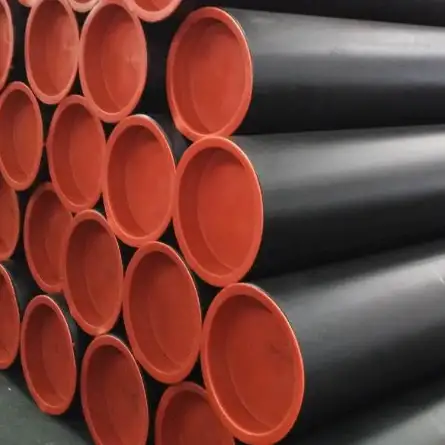I’ve often fielded questions about how much a 4-inch cast iron pipe weighs. In my years as a piping specialist, I’ve seen engineers and contractors underestimate load, shipping, and support requirements. Cast iron, especially the 4-inch variety common in drains and vents, has a unique presence. Its weight isn’t just a number on a spec sheet; it dictates handling, support needs, labor costs, and even the feasibility of retrofits.
Understanding Cast Iron Pipes
Cast iron has been a workhorse in water, sewer, and HVAC systems for over a century. Its high compressive strength and fire resistance make it ideal for heavy-duty applications. Yet its density also means weight becomes a critical design parameter.
-
Material Composition. Cast iron typically contains 2–4% carbon and 1–3% silicon.
-
Standards & Grades. ASTM A74 for soil pipe; ASTM A126 for pressure pipe.
-
Applications. Potable water, storm drainage, underground sewer lines, HVAC drainage.
Factors Influencing Pipe Weight
Several elements determine the final weight of a 4″ cast iron pipe:
-
Wall Thickness. Thicker walls increase weight substantially.
-
Length. Standard lengths range from 2′ to 20′.
-
Bell & Spigot vs. Hubless. Bells add material, thus extra mass.
-
Manufacturing Tolerances. Castings can deviate ±5% by weight.
Calculating the Weight of a 4-Inch Cast Iron Pipe
I’ll illustrate the calculation method.
-
Formula:
Weight=Density×Volume
-
Density of Cast Iron: Approximately 450 lb/ft³ (7,200 kg/m³).
-
Volume: Cross-sectional area × length.
For a pipe with 4″ nominal bore and 0.28″ wall:
-
Outer Diameter (OD): 4″ + (2 × 0.28″) = 4.56″
-
Inner Radius (rᵢ): 2″
-
Outer Radius (rₒ): 2.28″
-
Cross-Sectional Area: π(rₒ² – rᵢ²)
=π(2.28²–2²)in²≈π(5.20–4.00)=π(1.20)≈3.77in²
-
Convert to ft²: 3.77 in² × (1 ft/12 in)² ≈ 0.0261 ft²
-
Length Example (10 ft): Volume = 0.0261 ft² × 10 ft = 0.261 ft³
-
Weight: 0.261 ft³ × 450 lb/ft³ ≈ 117.5 lb

Weight Comparison Table
| Pipe Type | Wall Thickness | Length | Approx. Weight per Foot | Total Weight (10 ft) |
|---|---|---|---|---|
| 4″ Cast Iron, ASTM A74 | 0.28″ | 10 ft | 11.8 lb/ft | 118 lb |
| 4″ Cast Iron, ASTM A126 | 0.35″ | 10 ft | 14.7 lb/ft | 147 lb |
| 4″ Ductile Iron | 0.25″ | 10 ft | 9.5 lb/ft | 95 lb |
| 4″ PVC SCH 40 | 0.237″ | 10 ft | 1.7 lb/ft | 17 lb |
| 4″ HDPE (SDR 11) | 0.727″ | 10 ft | 7.2 lb/ft | 72 lb |
Table Notes:
-
ASTM A126 (pressure-rated) has thicker walls.
-
Ductile iron offers higher tensile strength at lower weight.
Practical Implications
Knowing precise weight is vital. It affects:
-
Support Design: Hangers and brackets must handle static load plus fluid weight.
-
Shipping Costs: Weights drive freight charges; under‐estimation can blow budgets.
-
Labor & Equipment: Hoisting a 120-lb pipe demands either two workers or lifting gear.
Case Study: Residential Fire Main Installation
Background: I oversaw a 4″ cast iron fire main for a 12-unit apartment block.
-
Pipe Spec: ASTM A126, 4″ ID, 0.35″ wall, bell & spigot, 100 ft run.
-
Weight Calculation: 14.7 lb/ft × 100 ft = 1,470 lb.
-
Execution:
-
Rigging: We rented a small telehandler.
-
Supports: Installed 6” wide steel saddles every 6 ft.
-
Safety: Ensured two certified riggers at all times.
-
Outcome: Project finished on time with zero incidents. Precise weight planning saved 10% on rigging costs.
Conclusion
I’ve walked you through calculating and contextualizing the weight of a 4″ cast iron pipe. From basic formulas to real-world applications, accurate weight assessment ensures safer, more economical projects. Remember to factor in wall thickness, pipe length, and joint type when estimating mass.
Frequently Asked Questions (FAQs)
1. How much does a 4″ cast iron pipe weigh per foot?
Typically, a standard ASTM A74 4″ cast iron pipe with a 0.28″ wall weighs about 11.8 lb per foot. Heavier pressure-rated grades (ASTM A126) can weigh up to 14.7 lb per foot.
2. Does bell & spigot add significant weight?
Yes. A bell adds approximately 2–4% extra material per joint. For long runs with many bells, factor in an additional 0.3–0.6 lb per foot.
3. How does cast iron compare to PVC in weight?
PVC SCH 40 4″ pipe weighs roughly 1.7 lb per foot—over six times lighter than equivalent cast iron. This difference impacts support spacing and shipping costs.
4. What lifting gear is recommended for 4″ cast iron pipe?
For single sections (≈120–150 lb), use a small telehandler or gantry crane. Manual two-person lifts are possible but risk fatigue. Always follow OSHA rigging guidelines.
5. Can weight variances affect flow calculations?
Indirectly. Heavier pipes often have thicker walls, reducing ID slightly. This can affect hydraulic capacity. Always confirm internal diameter when modeling flow.

